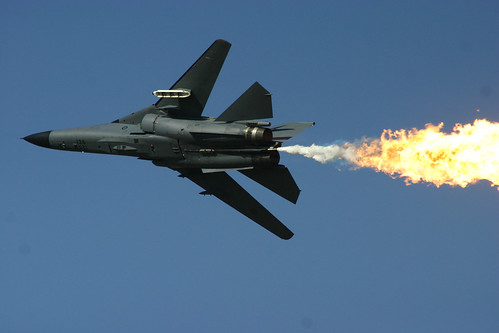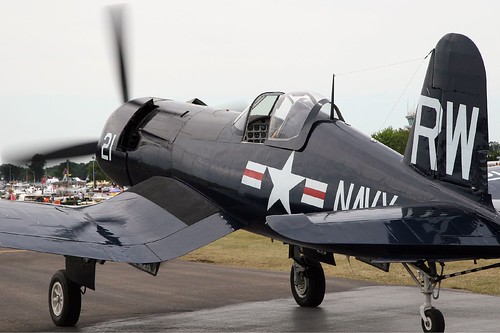
“Hey Dave, did I ever tell you the story about how they chose the contractor for the F-111?” asked Gus my co-worker at the Flight Dynamics Laboratory Wright-Patterson, Air Force Base near Dayton, Ohio. I was working at the lab during the summer of 1986 between my junior and senior year at Ohio State.
The F-111 is a General Dynamics fighter-bomber aircraft built in the early sixties.
Gus was keen to tell me the story. And, I was keen to listen. He was a great storyteller; his stories were interesting, entertaining and usually contained a lesson. He had a lot of down home mid-west wisdom.
Gus was one of the old timers; been working at the lab for years. He was from Illinois and started his career as a Navy pilot flying Corsairs. Those are the famous World War II aircraft with the anhedral (bent downwards) wings. Gus told me why the wings were bent, “… had to bend em, otherwise the wheels wouldn’t reach the ground. Propeller was just too damn big.” And here I was thinking it had something to do with improving the aerodynamics. That’s why you talk to the old timers – you learn things.

Gus missed out on World War II; born too late. He flew the Corsairs in the Illinois Air National Guard on weekends. During the week, he studied engineering at the University of Illinois under the GI Bill. “We used to fly over the quadrangle on Saturday afternoons,” he told me. “We used to fly low – you want to know how low?” he’d ask. I shook my head up and down and Gus answered with a sly grin and a snicker, “The students had to look down as they waived out the windows at us!”
When Gus told the story of how they selected the contractor for the F-111, I listened like a kid chomping on popcorn waiting for the movie to start, “They locked us up in an underground vault for 6 months. Engineers from all over the country. We were all TDY (temporary duty) to Washington to review the two proposals for the new fighter bomber aircraft. One proposal came from Boeing; the other from General Dynamics. For six months we studied the two proposals and finally arrived at a unanimous conclusion – the Boeing proposal was far and away better; it was cheaper and the design was better. We recommended awarding the contract to Boeing.”
“Yeah, but the F-111 is a General Dynamics aircraft.” I interjected.
“That’s right. And, that’s why I’m telling this story; how did General Dynamics get the contract if our 6 month study concluded that Boeing had the better proposal?
“Well, it turns out there’s more to contract proposals than innovative design concepts, efficient pricing and facts. There’s another element that us engineers forgot to account for – politics. And politics was the winner; politics was the trump card; politics won the day. The technical merits didn’t matter; the costs didn’t matter; the facts didn’t matter. When it came to selecting the best proposal, all that mattered was this – the Vice President of the United States was from Texas and General Dynamics was located in Forth Worth. That settled it. They awarded the contract to General Dynamics!
“So, here’s my question, why did they lock us up in a basement in Washington for six months if they were going to select General Dynamics anyway? Why didn’t they just skip that whole part? I wasted six months on a useless project. It was ridiculous. All the other engineers were just as upset as me about it. What a colossal waste of time, energy, manpower and taxpayer money.”
And, that’s the story of how the F-111 was born as told to me by my old timer engineer friend Gus. According to Gus, politics was the only consideration when selecting a contractor to build the F-111.
I wonder how many other government contracts are awarded using this same method?